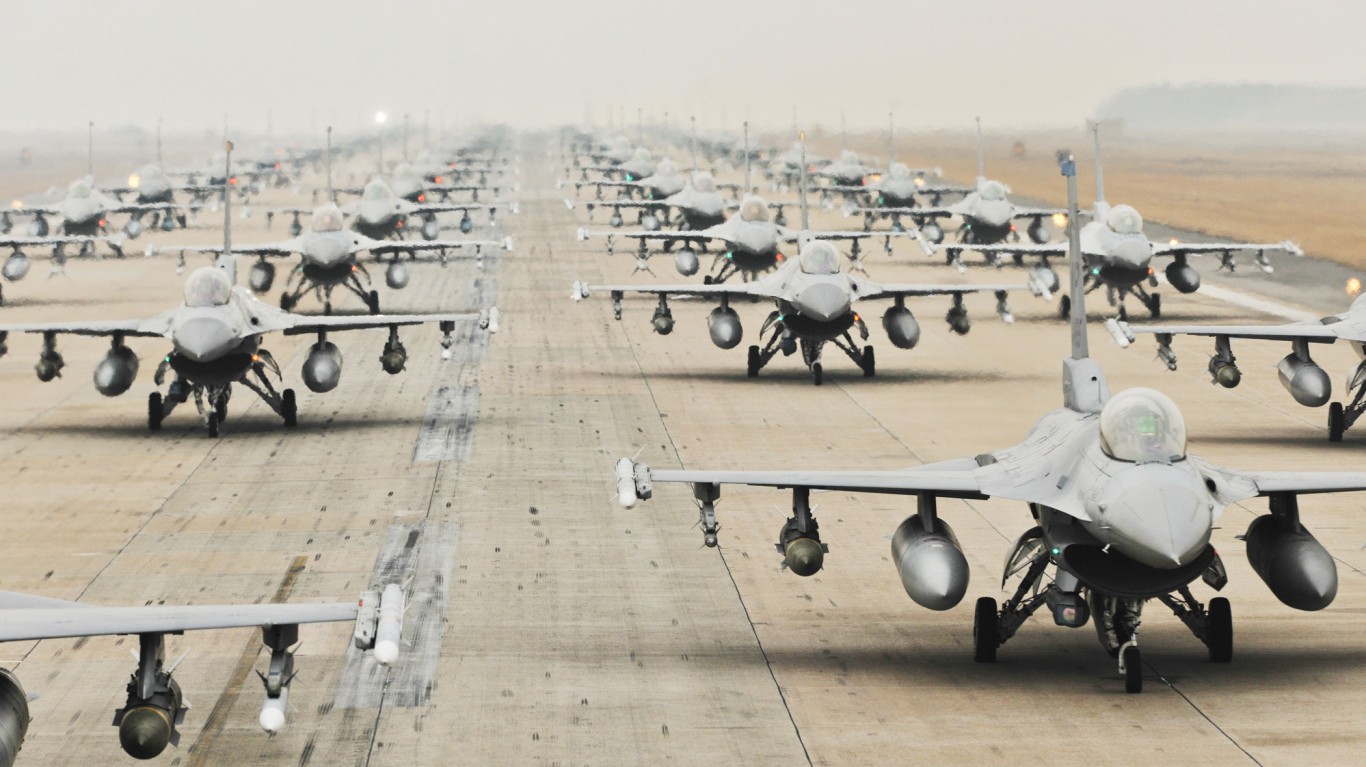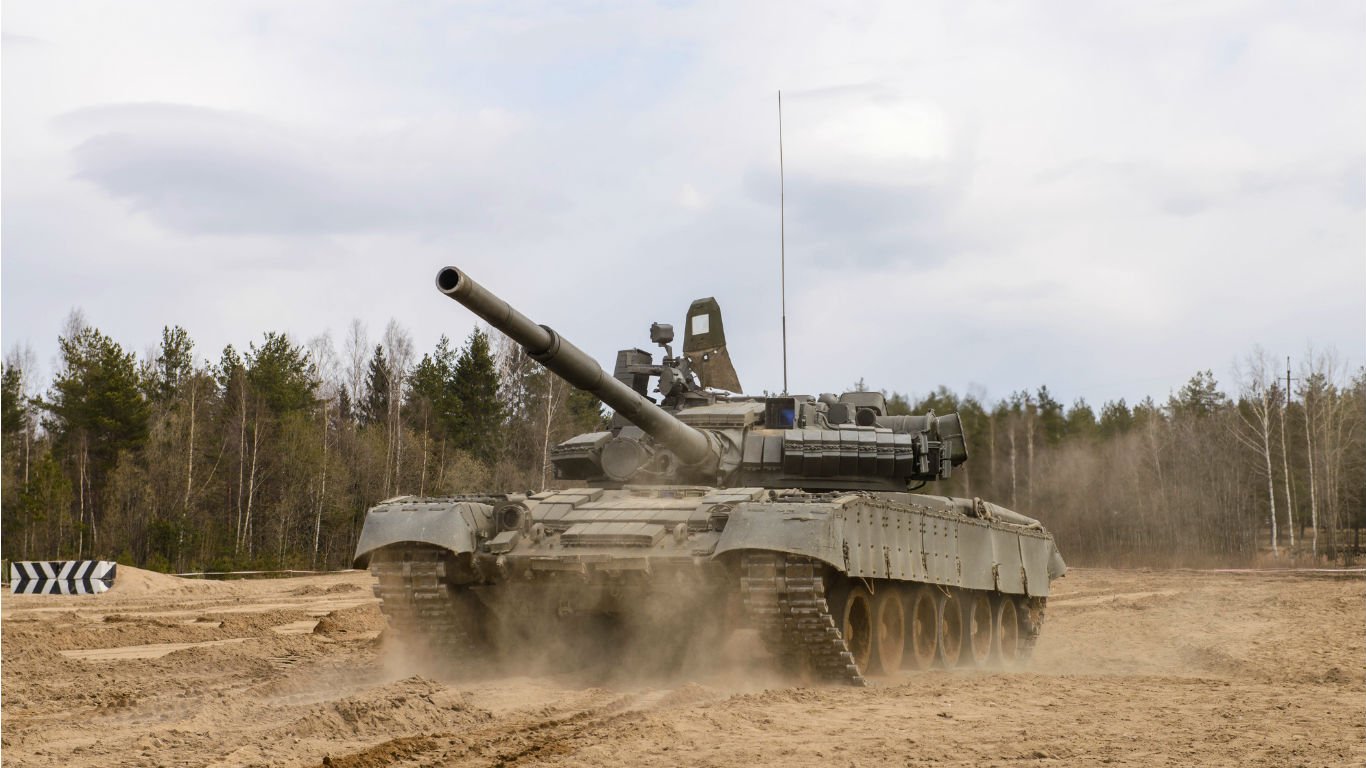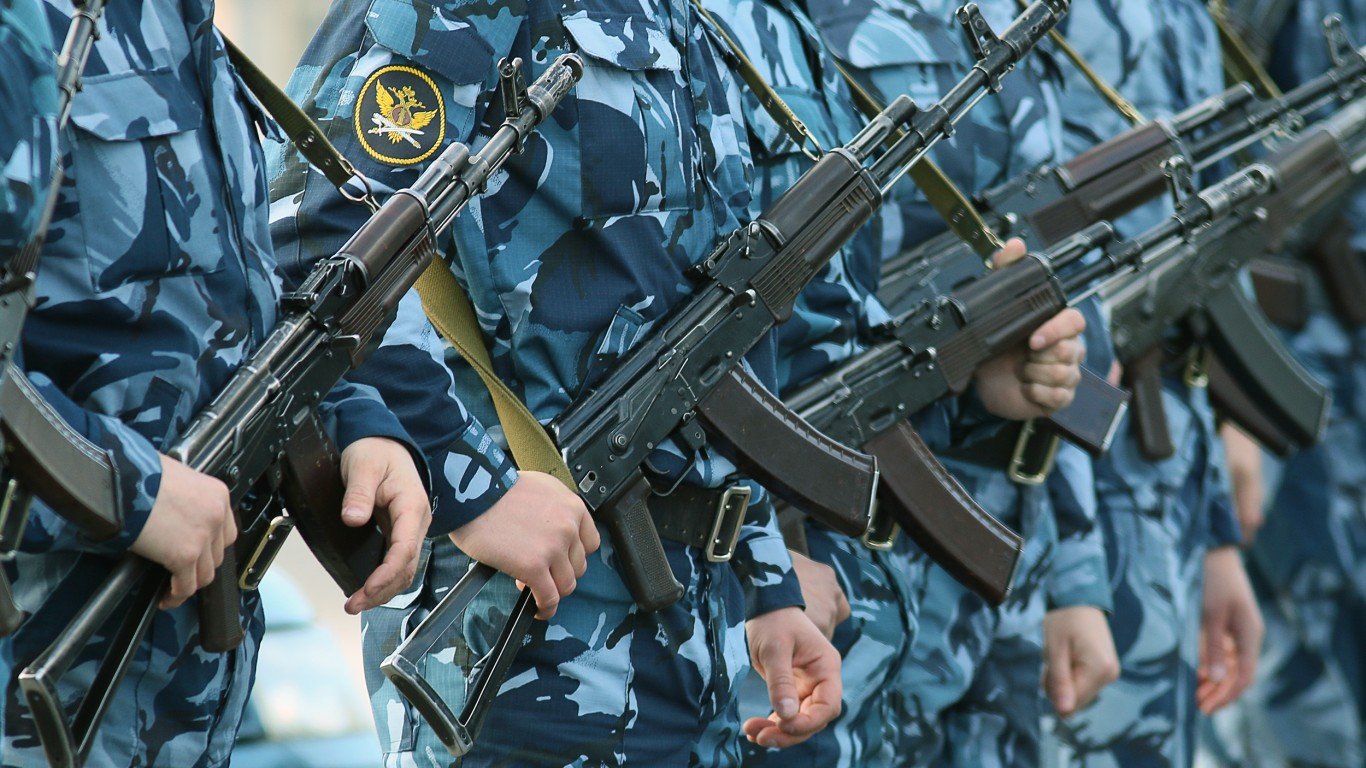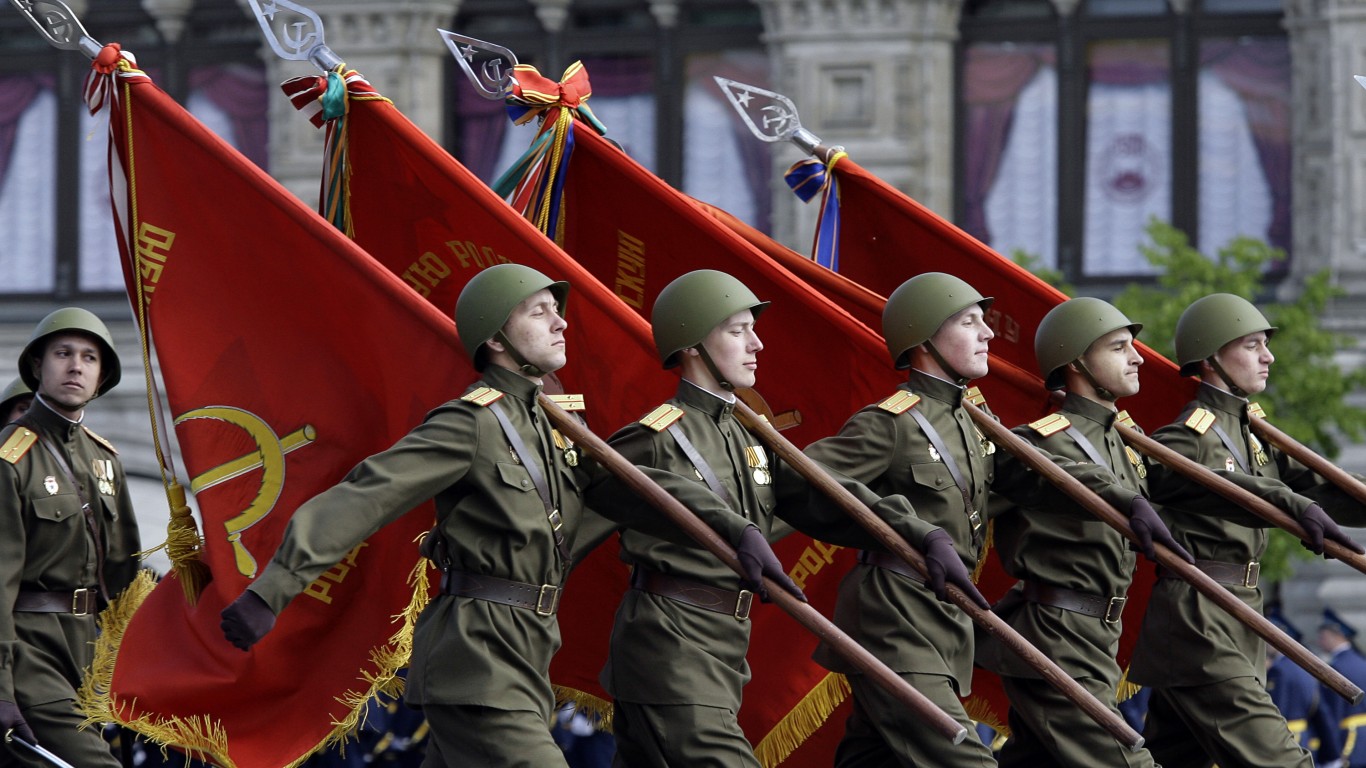

The Russian invasion of Ukraine is now stretching on into its second year. Many pundits expected the conflict to last weeks at most, and maybe even end in a few days. The basis for what turned out to be gross underestimates was the relative difference in size between the belligerents. Of course, Ukraine has had a great deal of help, (see the countries sending the most aid to Ukraine) but Russia is a much, much larger nation and has about 3 times the population. Given the fact that Russia is the biggest nation in the world in land area and shares borders with 16 other countries, it stands to reason that throughout its history, wars with its neighbors would be inevitable. That is indeed the case – but Russia has not always won these conflicts.
To find the wars that Russia has lost, 24/7 Wall St. has referenced sources such as Britannica, History, Russia Beyond, Tufts University, and Wikipedia to create its list. We date the wars Russia has lost from the time of Ivan the Terrible (who reigned as tsar from 1547 to 1575) to the present day and Vladimir Putin. (Here’s a list of every Russian [and Soviet] head of state since Peter the Great.)
History has shown that conflicts that end badly for Russia – the Russo-Japanese War, World War I, and the invasion of Afghanistan, for example – can lead to political upheavals and revolutions. Nonetheless, Russia, in whatever stage of its existence, has repeatedly engaged in warfare.
Greg Carleton, a professor of Russian studies at Tufts, has written a book on the history and culture of war in Russia titled “Russia: The Story of War.” He told Tufts Now that “Russia has always been a militarized country,” but adds that “It has done this, in fact, for its own survival.”
Carleton considers Russia’s war experience as a history of “defensive expansionism,” and it has been a strategy of the tsars, the Soviet Union, and modern-day Russia. “The thinking,” he said, “is like this: We’ve got a hostile neighbor – or a potentially hostile neighbor – so the best thing to do to protect ourselves is to cross our border and squash that neighbor.” (As an illustration of the country’s penchant battle, here are 20 wars Russia has fought since 1917.)
Click here to see 19 wars Russia has lost, from Ivan the Terrible to Vladimir Putin
The invasion of Ukraine obviously fits into that thinking. Whether or not this war will be added to the list of Russian defeats remains to be seen.
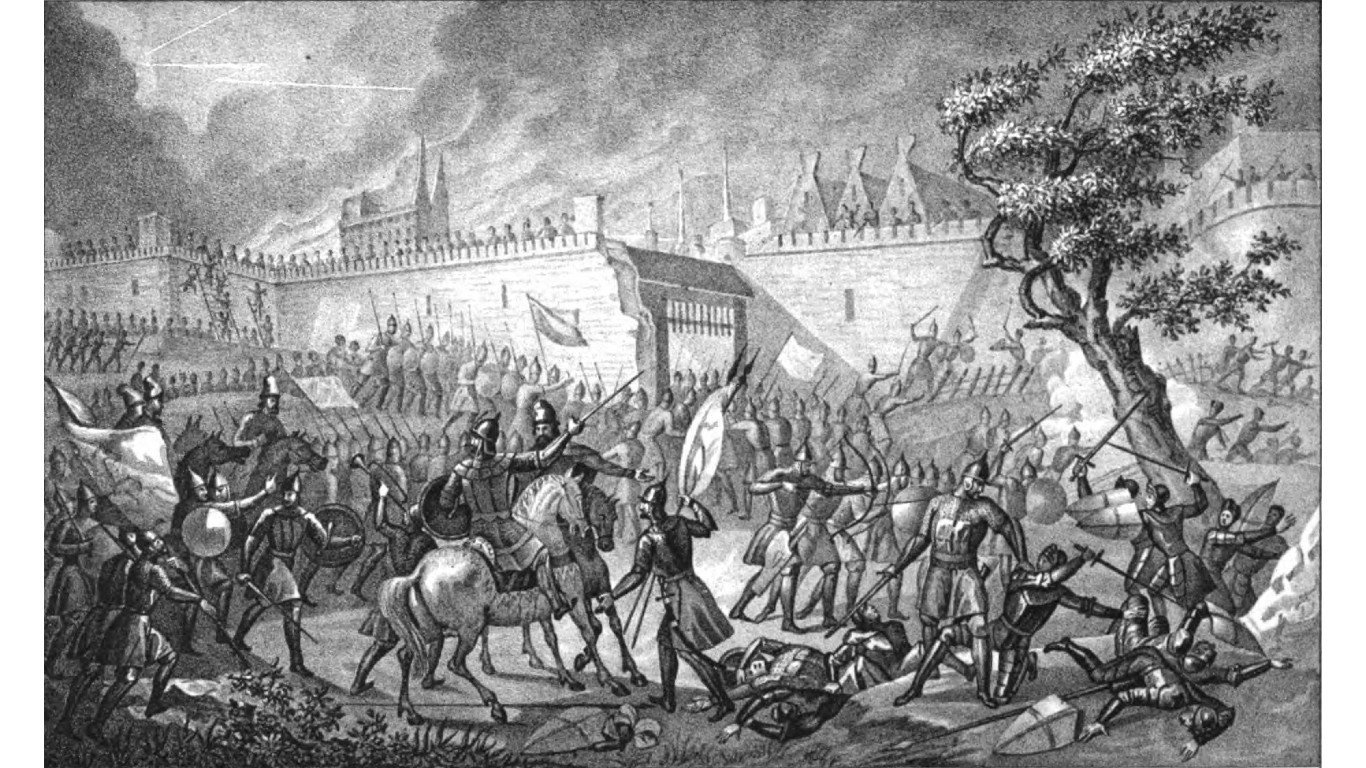
Livonian War
>Year(s) 1558â1583
> Opponents: Livonian Confederation, Denmark-Norway, Sweden, Polish- Lithuanian Commonwealth and Union
Under the reign of Tsar Ivan IV Vasilyevich, known to history as Ivan the Terrible, Russia went to war with Sweden, the Great Duchy of Lithuania (united with Poland in 1569), and their allies over control of the lands held by the Livonian Confederation (much of present day Latvia and Estonia). The war lasted 25 years, and ended with a major defeat for Russia, which was obliged to renounce any claims to Livonia and give up other territory, including parts of Lithuania and towns along the Gulf of Finland.
[in-text-ad]
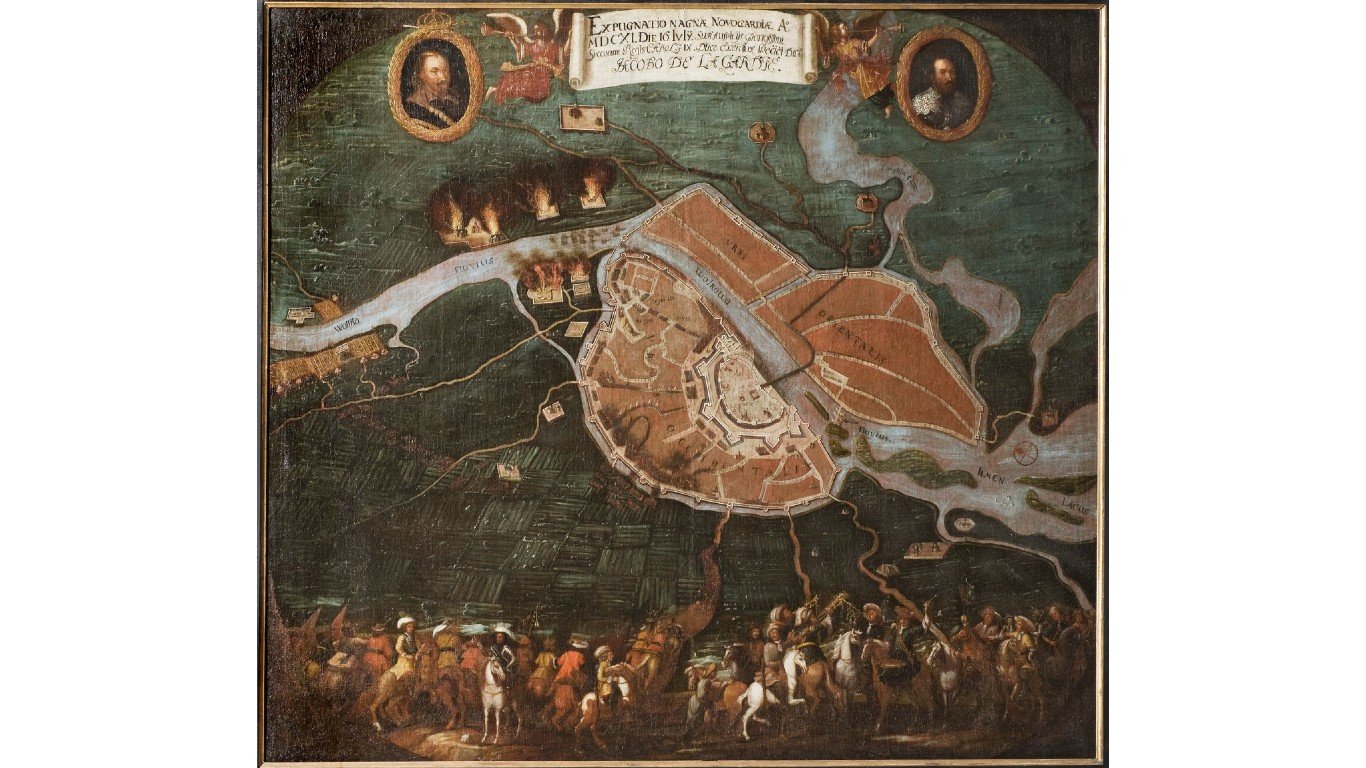
Ingrian War
>Year(s) 1610â1617
> Opponent: Sweden
The Ingrian War with Sweden involved an attempt by Sweden to install a Swedish duke on the Russian throne. The conflict ended with Sweden gaining territory – including Ingria on the southeastern shore of the Gulf of Finland – in the Treaty of Stolbovo. The pact required Russia to pay war indemnities to Sweden, and robbed the Tsardom of all access to the Baltic Sea.
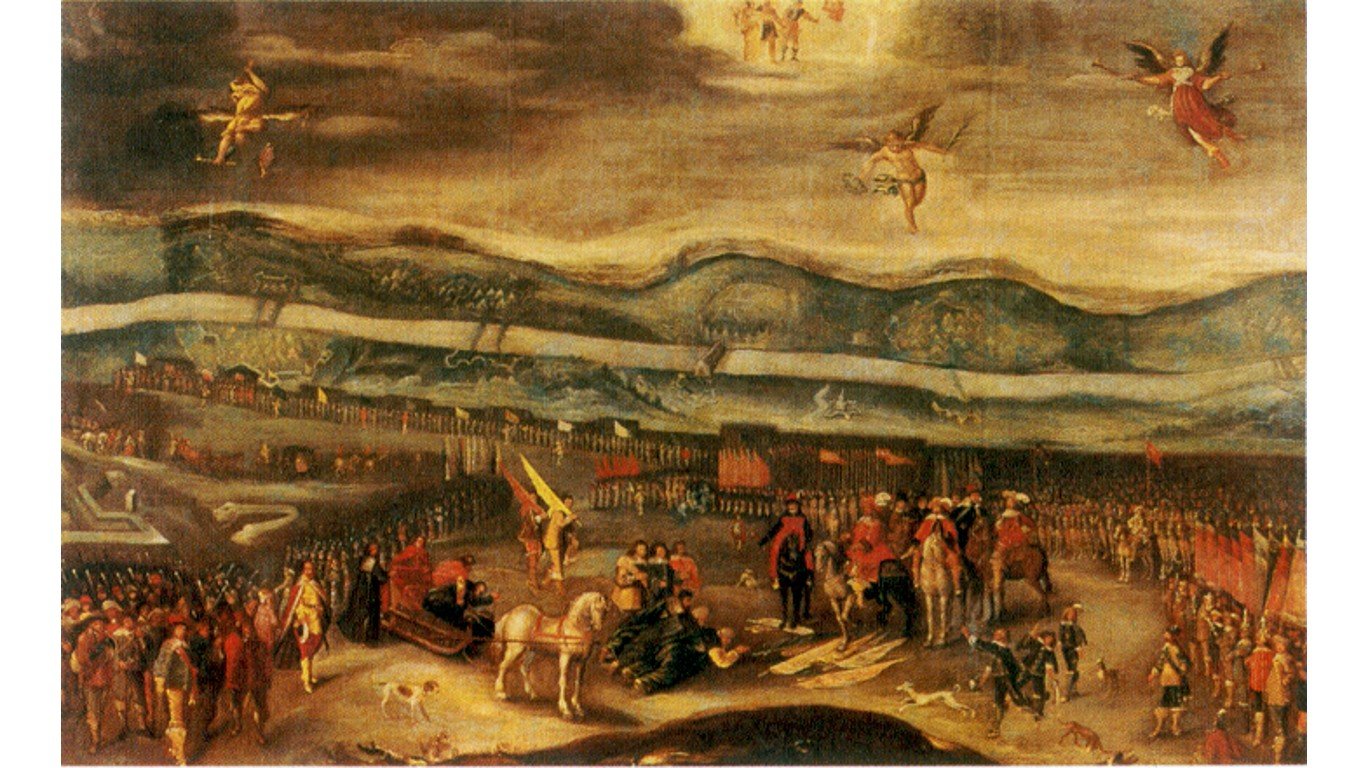
Smolensk War
>Year(s) 1632â1634
> Opponent: Poland-Lithuania
The Smolensk War was an unsuccessful campaign by Russia to recover the western border regions lost to the Polish-Lithuanian Commonwealth. The area included 30 fortress towns, the most important of which was Smolensk, which guarded the main western roads to Moscow. The conflict was significant because it marked Russia’s first use of Western European infantry organization and tactics.
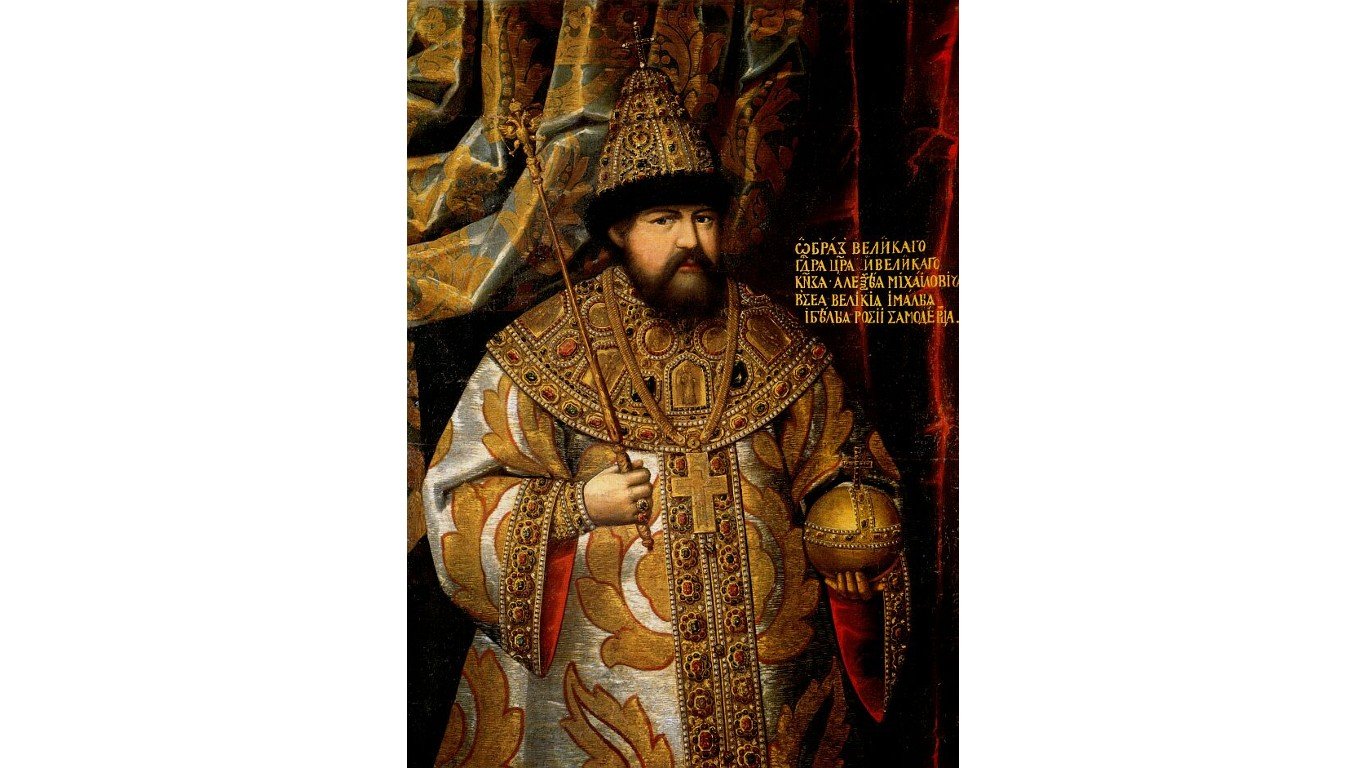
Alexis I’s Persian War
>Year(s) 1651â1653
> Opponent: Persia
War erupted between the Safavid Empire in Persia and Russia under Tsar Alexis I. The bone of contention was a newly built Russian-held fortress on the lower Sunzha River near present-day Grozny in the North Caucasus. After defeats by Russian troops, a stronger Persian force seized the fort and destroyed it. The fort’s fall strengthened Persia’s position in the region.
[in-text-ad-2]
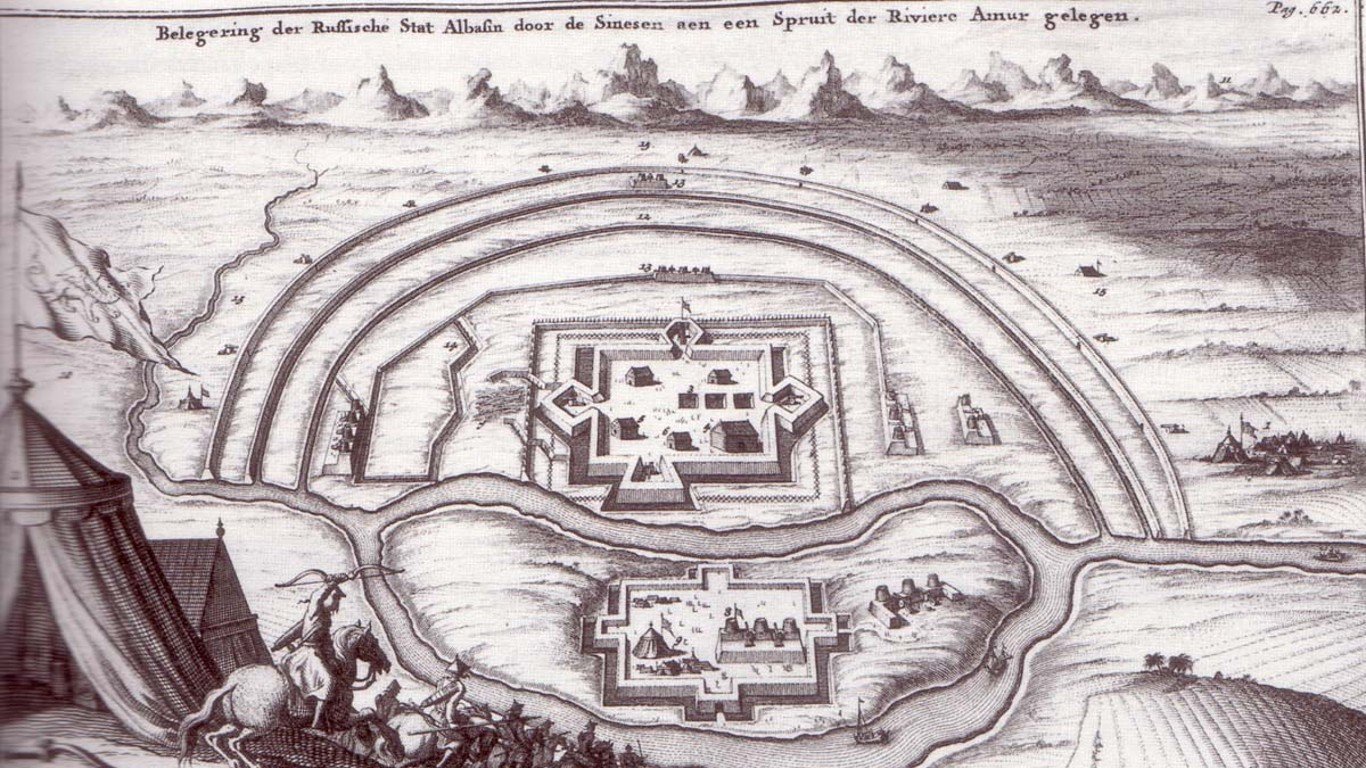
Sino-Russian border conflicts
>Year(s) 1652â1689
> Opponent: China/Korea
In the 17th century, Russia was trying to expand to the East, and imperial China stood in its way. There were sporadic battles over a 37-year period between the Qing dynasty and the Tsardom of Russia, the latter of which sought the land north of the Amur River. The conflict ended with the Treaty of Nerchinsk in 1689 with the Russians yielding the area north of the Amur River as far as the Stanovoy Mountains. Sino-Russian border disputes continue to this day.

Russo-Ottoman War
>Year(s) 1710-1713
> Opponent: Ottoman Empire
Russia’s southern expansion during the reign of Peter the Great was thwarted by the Ottoman Empire. The tsar’s army, outnumbered five to one by a combined force of Ottoman and Crimean troops in Bessarabia, was forced to surrender and the tsar had to accept humiliating terms of the Treaty of the Pruth. Russia gave up the city of Azov, destroyed fortresses in that region, lost access to the Black Sea, and had to destroy its first navy.
[in-text-ad]
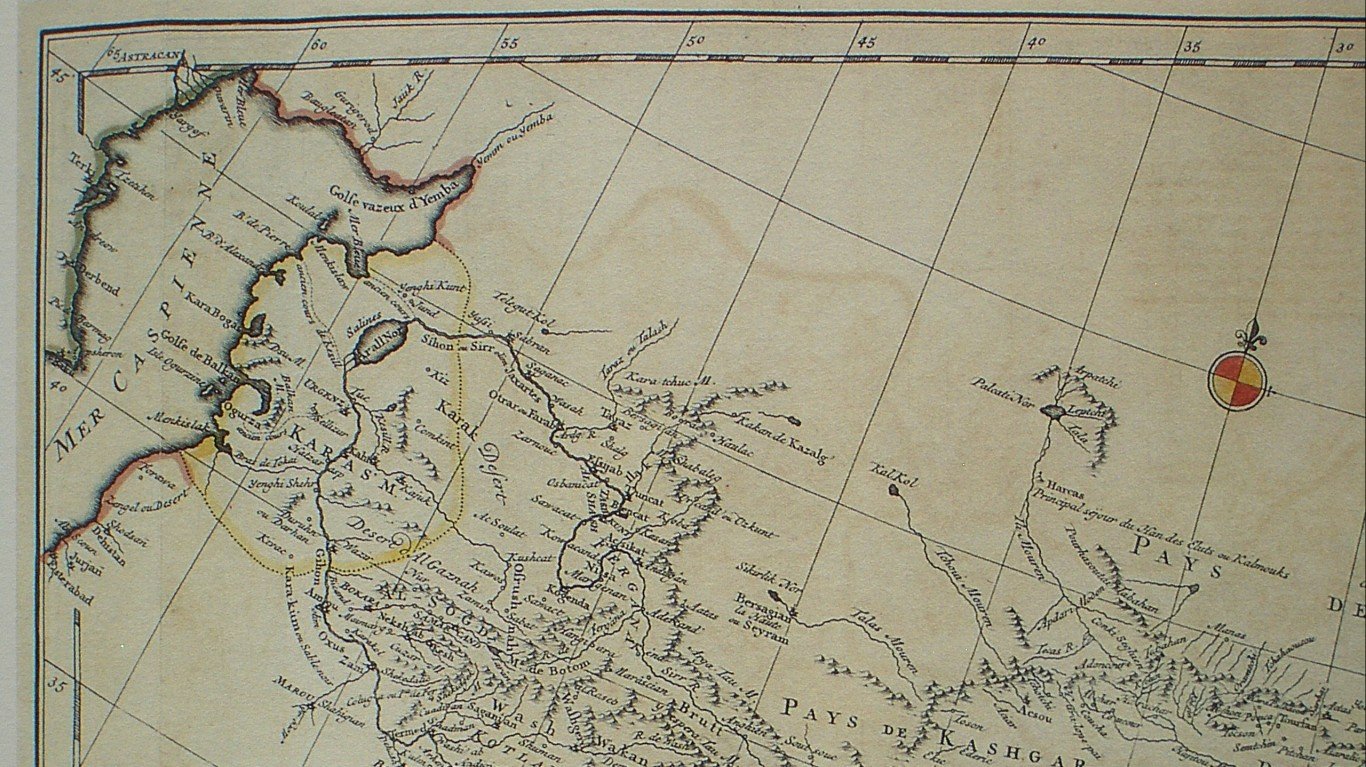
Khivan War
>Year(s) 1717
> Opponent: Khanate of Khiva
Russia attacked the Khanate of Khiva, in what is now Uzbekistan, five times in its history. During Peter the Great’s reign, the Russians assaulted Khiva but were beaten. After winning the battle, Shir Ghazi Khan made diplomatic approaches suggesting that the Russians disperse so that they could be better fed. After they did so, they were killed or enslaved, with only a few escaping to recount the story.
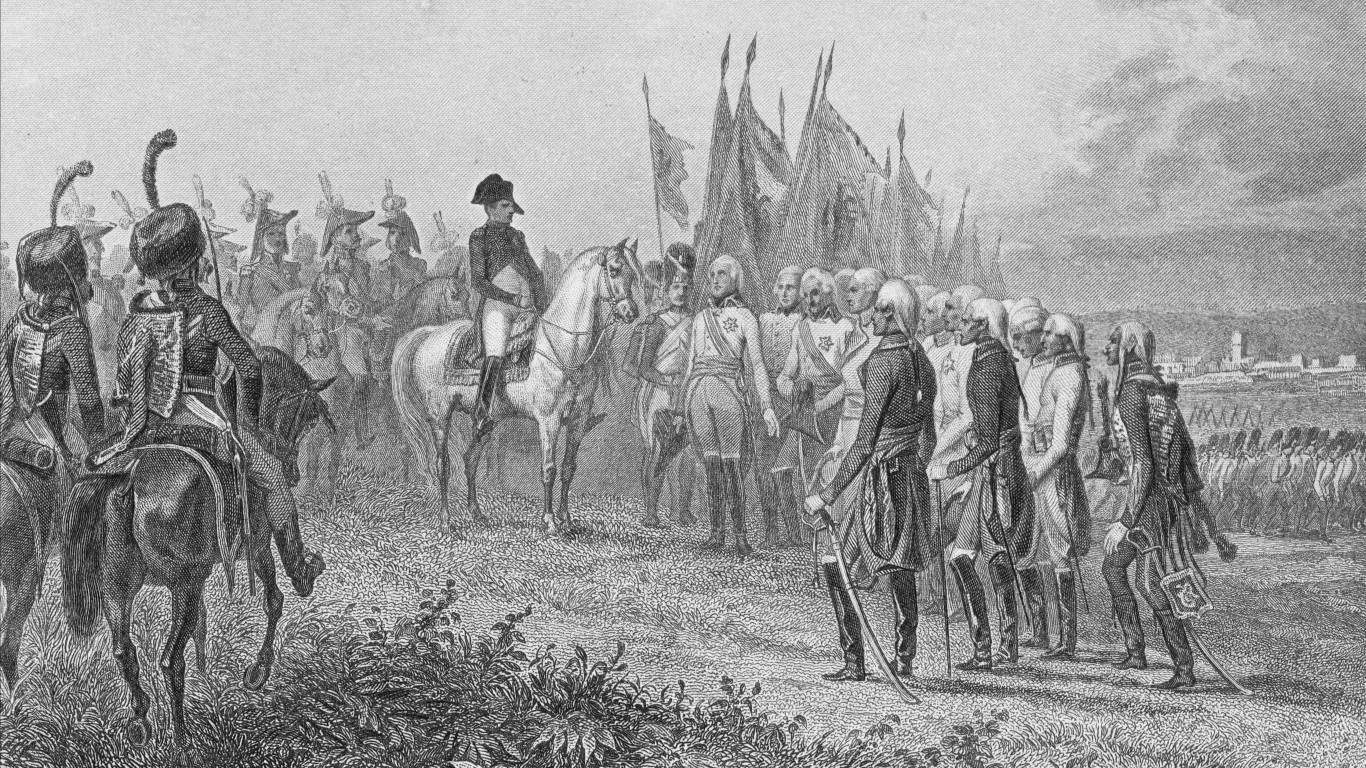
War of the Third Coalition
>Year(s) 1803-1806
> Russian allies: United Kingdom, Sicily, Austria, Naples, Portugal, Sweden
> Opponents: France and French client states
Russia was part of the Third Coalition, the European allies arrayed against France and Napoleon Bonaparte. The Battle of Austerlitz in December 1805 was the first engagement of the War of the Third Coalition and it was one of Napoleon’s greatest victories. Napoleon defeated a combined Russian-Austrian force of 90,000, and the result compelled Austria to make peace with France with the Treaty of Pressburg. Over the course of the war, the Russians lost about 25,000 troops, more than any other participant.
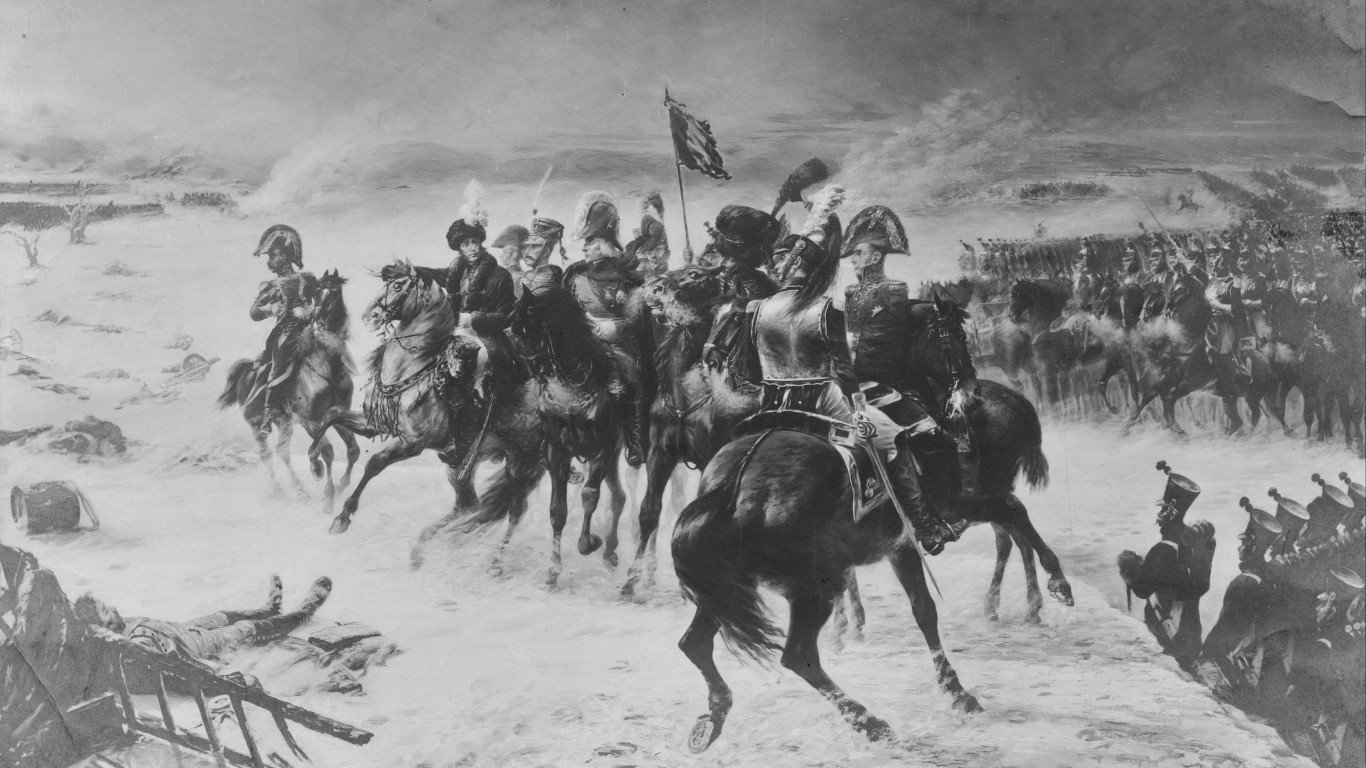
War of the Fourth Coalition
>Year(s) 1806â1807
> Russian allies: Prussia, Saxony, Sicily, Sweden, United Kingdom
> Opponents: France, French client states, Spain, Confederation of the Rhine, Italy, Naples, Polish legions
The War of the Fourth Coalition that pitted Russia, Prussia, the United Kingdom, and other nations against France and her confederates was a disaster for the coalition allies. The Battle of Jena-Auerstedt in October 1806 ended in a rout of the Prussians, forcing them to seek peace, and the following July, following the defeat of the Russians at the Battle of Friedland, Tsar Alexander I signed a treaty with France. A few months later, Russia declared war on its former ally, the United Kingdom.
[in-text-ad-2]
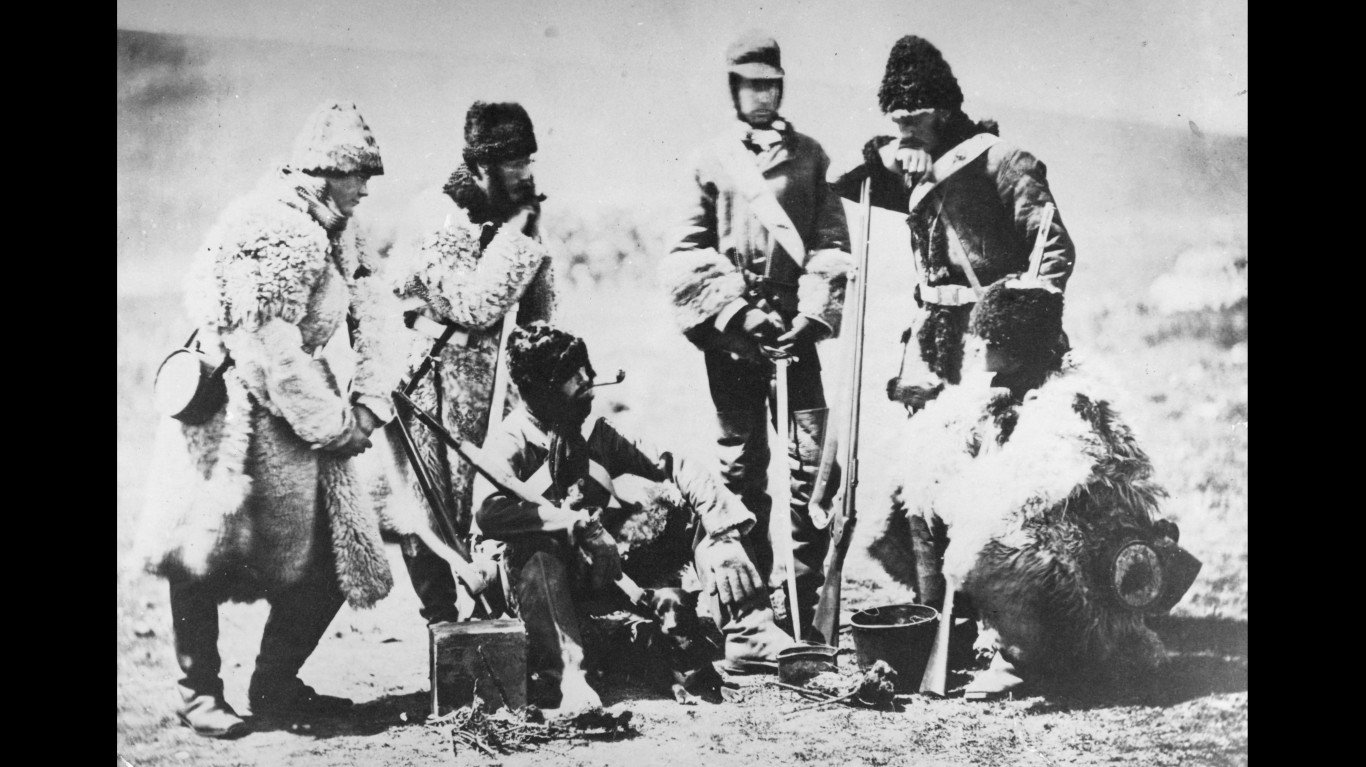
Crimean War
>Year(s) 1853-1856
> Opponents: France, United Kingdom, Turkey, Sardinia
The war’s origins arose from the conflict of great powers in the Middle East – France and Great Britain on one side, Russia on the other. The direct cause was a Russian demand to exert protection over the Orthodox subjects of the Ottoman sultan. The Western powers sided with the Ottomans. Russia lost the war and accepted the terms of the Treaty of Paris, signed in 1856, which guaranteed the integrity of the Ottoman Empire. Russia also gave up southern Bessarabia and the Danube River was opened to the shipping of all nations.
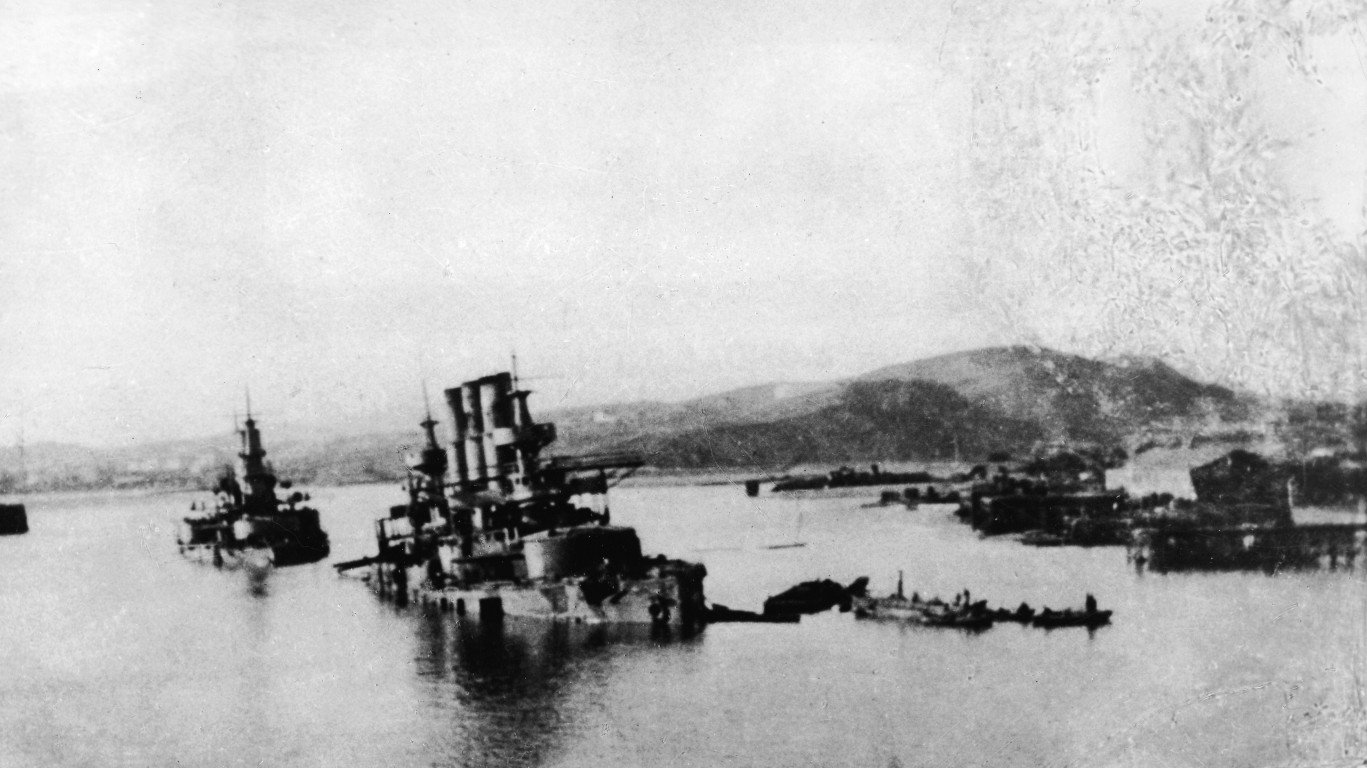
Russo-Japanese War
>Year(s) 1904-1905
> Opponent: Japan
Russia’s defeat at the hands of Japan in the Russo-Japanese War marked the first time in the modern era that an Asian power was able to defeat a Western nation. Russia was trying to expand its empire in Asia, while Japan was a rising imperial force that had quickly modernized its military. Japan won a series of land battles and destroyed the Russian fleet at the Battle of Tsushima. In the resulting Treaty of Portsmouth, Japan gained control of the area around Port Arthur and Russia agreed to evacuate southern Manchuria. Japan’s control of Korea was recognized.
[in-text-ad]
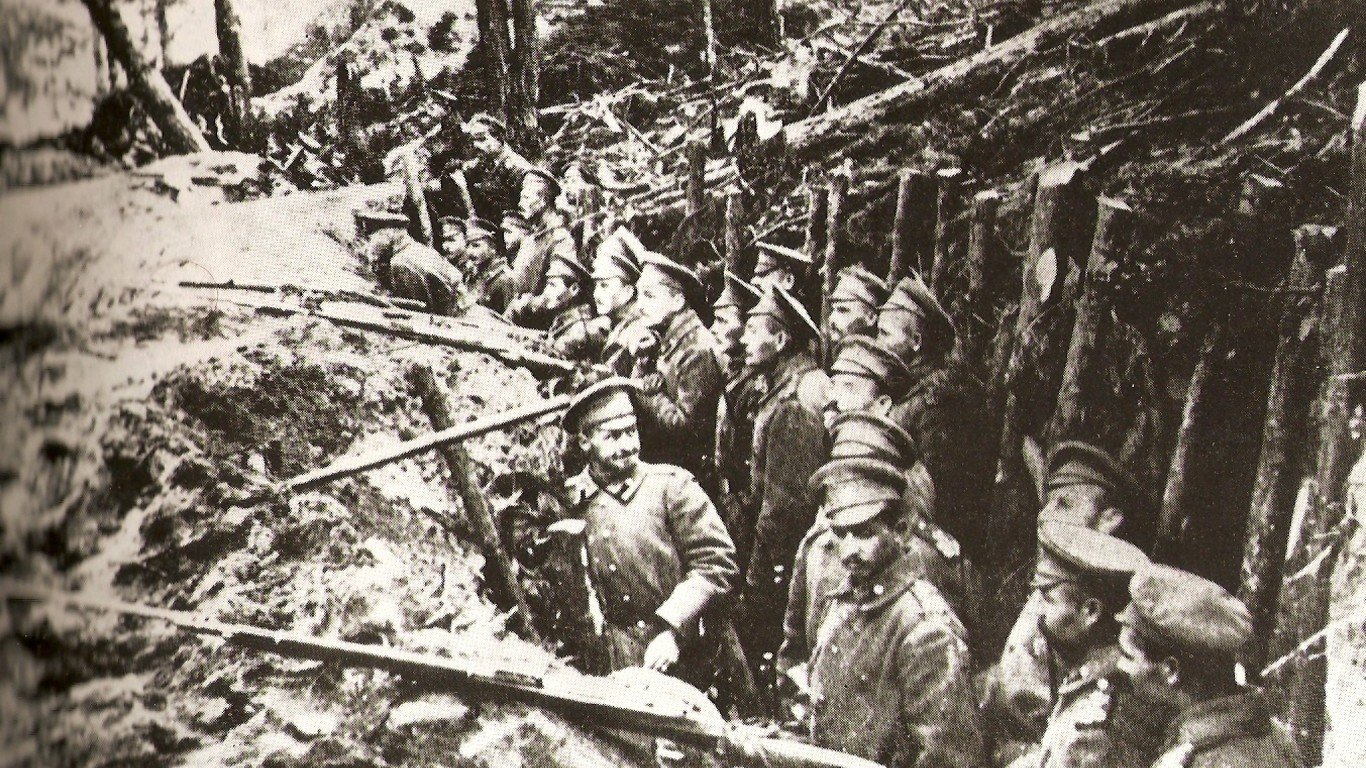
World War I
>Year(s) 1914-1918
> Russian allies: France, British Empire, United States, Italy, Serbia, Montenegro, Belgium, Japan, Romania, Portugal, Brazil, Hejaz, Greece, Armenia, Nejd and Hasa, China, Siam
> Opponents: Germany, Austria-Hungary, Turkey, Bulgaria
Russia’s military, logistical, and leadership weaknesses were exposed in its defeat by Germany and Austria-Hungary in World War I. The punitive Treaty of Brest-Litovsk forced Russia to give up more than 325,000 square miles, or about 15% of its pre-war empire, an area that was home to 31.5 million people, or 23.3% of its pre-war population. The disastrous defeat helped fuel the Russian Revolution, ultimately leading to the end of the monarchy, civil war, the creation of nations in Eastern Europe, and the establishment of the first communist regime.
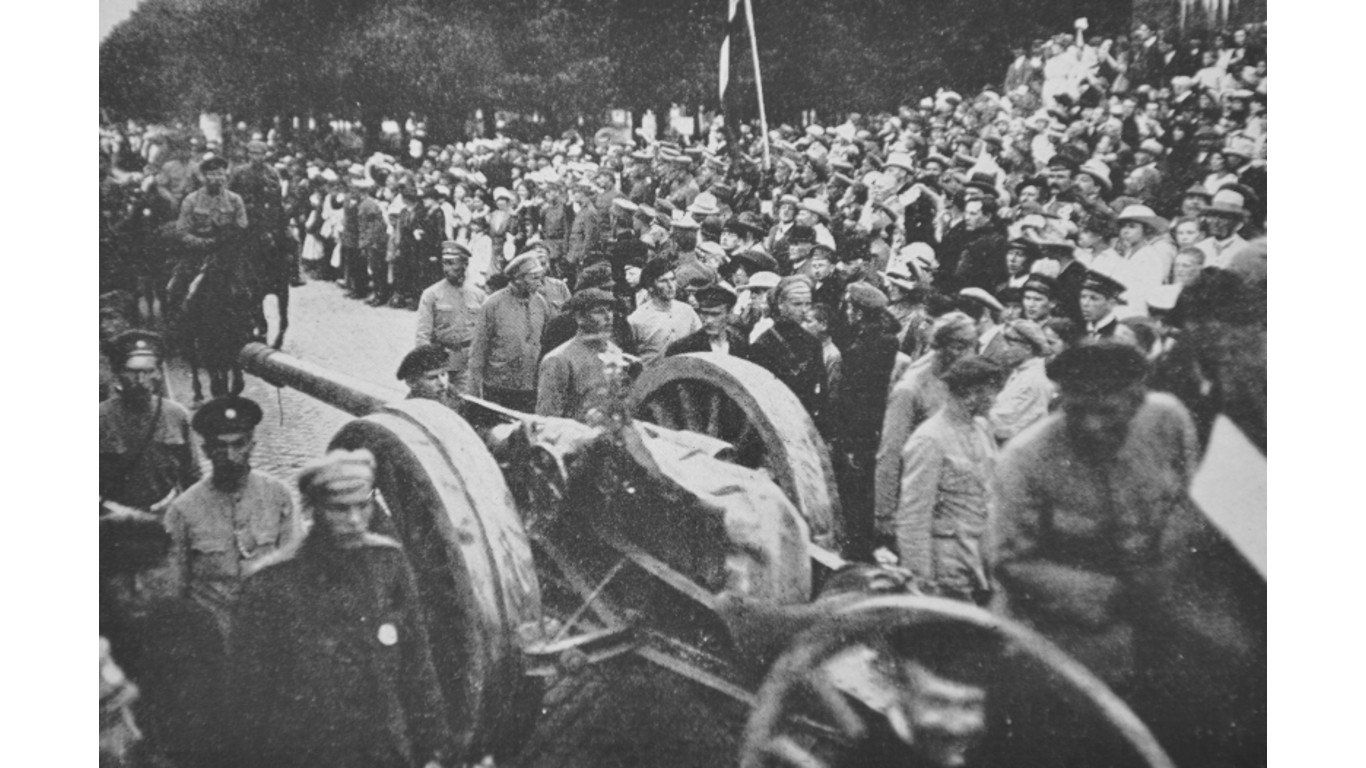
Latvian War of Independence
>Year(s) 1918-1920
> Russian ally: Latvian Soviet Socialist Republic
> Opponents: Latvian army, Estonia, Lieven, Poland, Lithuania, Germany, Baltische Landeswehr (Baltic Territorial Army)
After Germany and the Central Powers vacated territory they had gained in Eastern Europe from the Treaty of Brest-Litovsk at the end of WWI, the Baltic nation of Latvia sought independence. In January 1920, combined Latvian and Polish armies defeated the Red Army and pushed Soviet forces back into Russian territory. The Russian government ceased its support for the puppet Latvian Soviet Socialist Republic, which disbanded on Jan. 13, 1920. (A new Latvian Soviet Socialist Republic was established in 1940.)
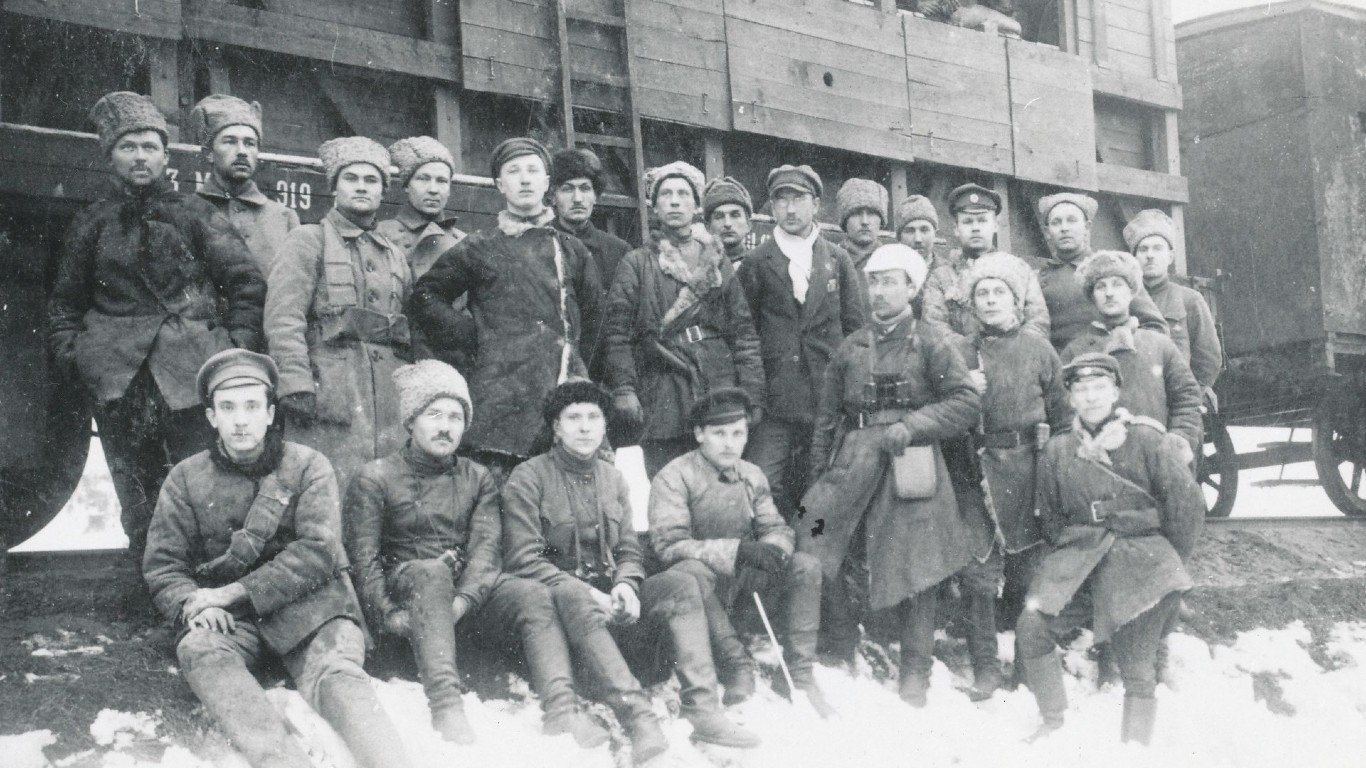
Estonian War of Independence
>Year(s) 1918-1920
> Russian ally: Baltische Landeswehr (Baltic Territorial Army)
> Opponent(s): Estonia, Latvia, United Kingdom, Russian White Movement
Germany occupied Estonia during WWI until it surrendered to the Allies on Nov. 11, 1918. The Estonian provisional government proclaimed independence, but the Soviet Red Army invaded Estonia 17 days later. The paramilitary Baltische Landeswehr, which had fought on the side of Latvia, joined the Soviets in fighting Estonia, which had occupied part of Latvia. Boosted by Allied weapons and war matériel, Finnish volunteers, and the Royal Navy, Estonia counterattacked in January 1919. By the following month, it had been liberated.
[in-text-ad-2]
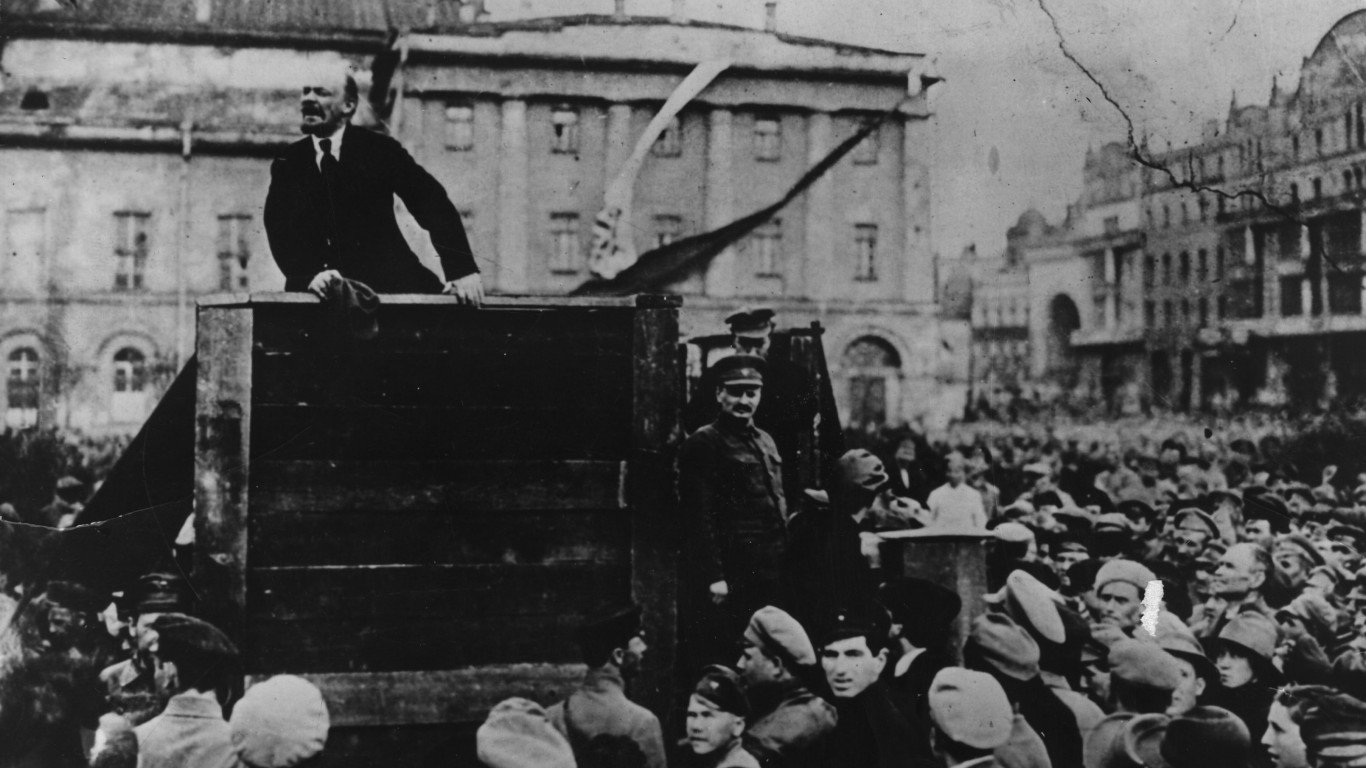
Polish-Soviet War
>Year(s) 1919-1921
> Russian allies: Ukrainian Soviet Socialst Republic, Byelorussian Soviet Socialist Republic, Polrewkom (Provisional Polish Revolutionary Committee)
> Opponent(s): Poland, Ukrainian and Lithuanian nationalists
During the chaos of the Russian Civil War, a conflict developed between Russia and Poland. After World War I, German armies in Eastern Europe began to withdraw from the western part of the former Russian Empire, parts of which would become the new Polish state. As the German army withdrew, the Red Army tried to occupy the territory. The Poles objected and took up arms against the Russians. After initial gains by Russia, the Poles and their allies gained needed supplies and drove the Russians back across the border. The Treaty of Riga was concluded on March 18, 1921, with large sections of what is now Belarus and Ukraine ceded to Poland. Soviet leader Vladimir Lenin had hoped to spread revolution through Poland into Germany and his strategy failed.
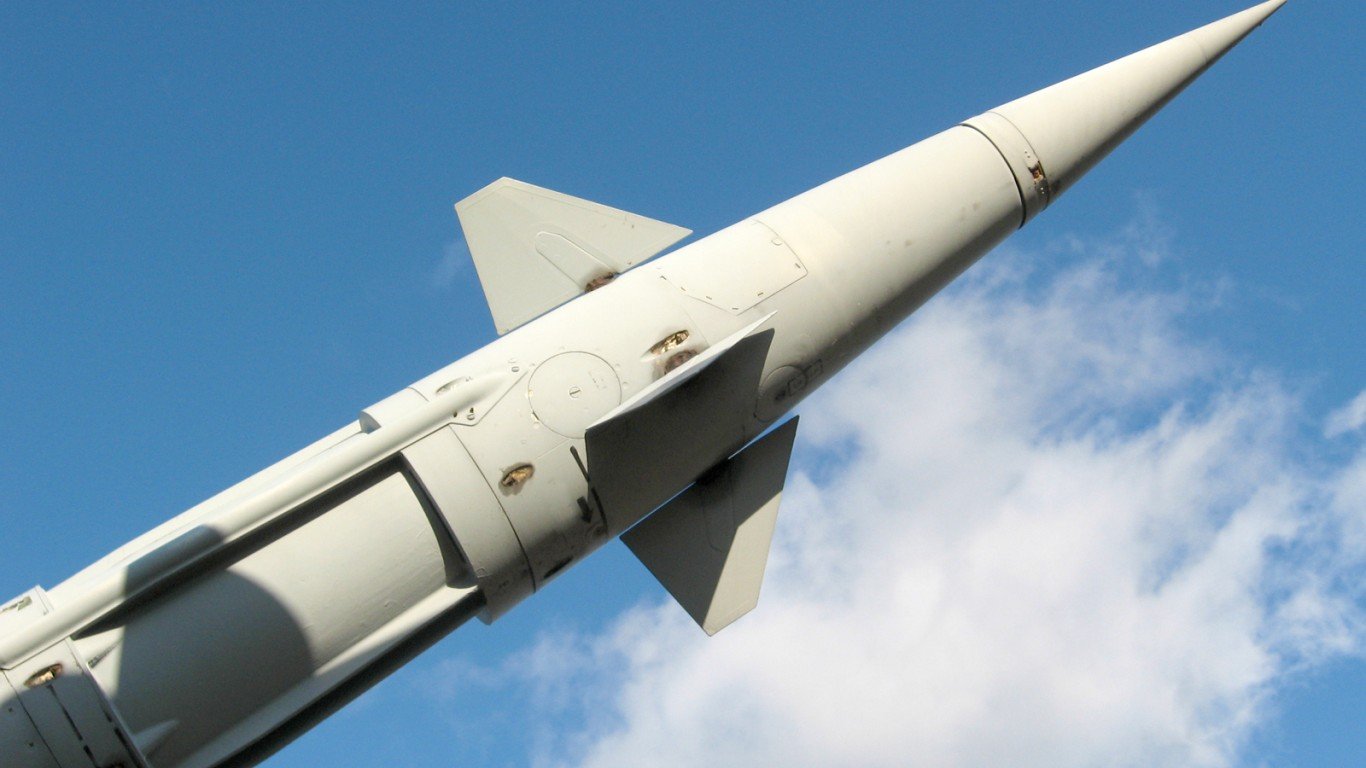
Cold War
>Year(s) 1947-1991
> Russian allies: Soviet Union’s Eastern European allies
> Opponent(s): United States and its allies
The Cold War, a term first used in the now-familiar sense in 1947 by American financier and presidential adviser Bernard Baruch, was a restrained rivalry that developed after World War II between the United States and the Soviet Union and their respective allies. It was conducted in political, economic, and cultural areas. Each side provided weapons and supplies to allies who fought in proxy wars. U.S. foreign policy strategist George F. Kennan authored the concept of containment, in which the U.S. should “contain” Soviet expansionism but should not use, or threaten to use, force to remove the communist regime. Kennan believed the inherent contractions of communist ideology would eventually bring down the Soviet Union. He was proved right in 1991 when the Soviet Union dissolved.
[in-text-ad]
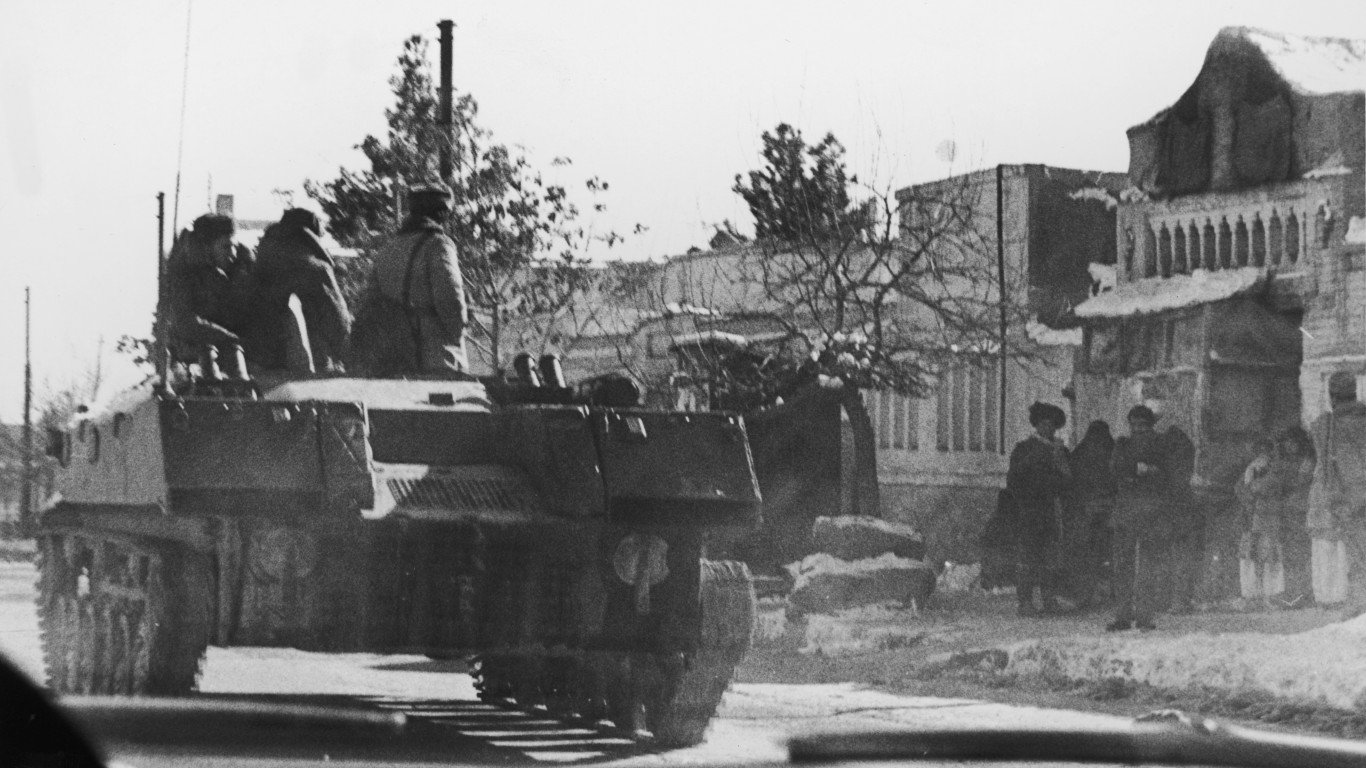
Afghan War
>Year(s) 1979-1989
> Russian ally: Afghan Government
> Opponent(s): Afghan mujahideen
Since the days of the Russian Empire, Afghanistan had always been critical to Russia’s geopolitical strategy, and in 1979, the Soviet Union was concerned that Afghanistan might draw closer to the U.S. The Soviets invaded Afghanistan in 1979 under the pretext of the so-called Brezhnev doctrine – named after Soviet leader Leonid Brezhnev – that maintained that one communist regime was honor-bound to support another, weaker one, and use military force if necessary. It did not go well. By the time the last Soviet troops withdrew in 1989, the Soviet Union had suffered a humiliating defeat that killed a million civilians and cost the lives of 125,000 Afghan, Soviet, and other combatants.
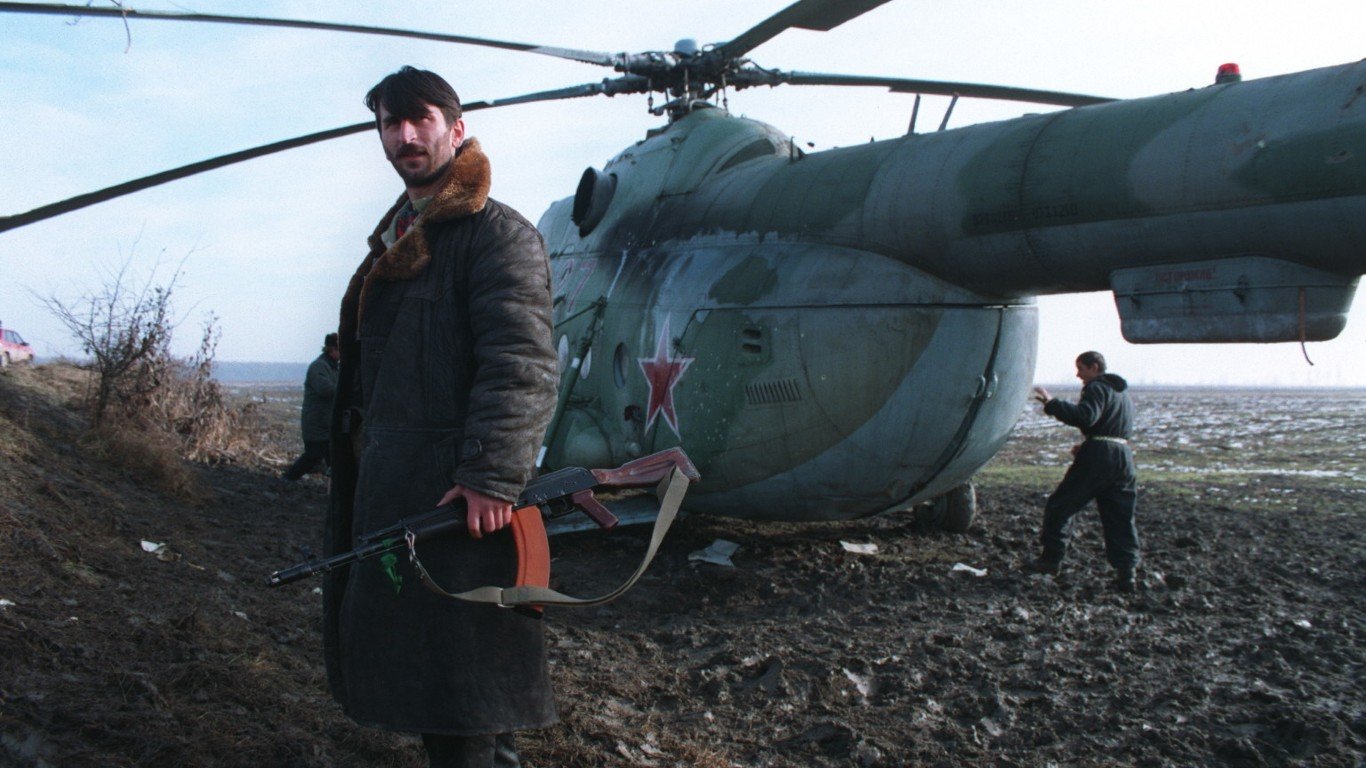
First Chechan War
>Year(s) 1994-1996
> Russian ally: Chechan opposition
> Opponent(s): Chechan Republic of Ichkeria, mujahideen
As a result of the First Chechen War, Chechnya gained greater autonomy from Russia and formed the Chechen Republic of Ichkeria. Most Chechens are Muslim, and the conflict took on a religious edge, as the rebels were joined in their fight by Muslims from other countries. The brutal war was unpopular in Russia, whose forces were repulsed by the Chechens in mountainous regions despite its decided advantage in manpower and weapons. The Russian government declared a ceasefire in 1996 and signed a peace treaty a year later. Civilian deaths were estimated at up to 100,000, and another 500,000 were uprooted by the war.
Sponsored: Want to Retire Early? Here’s a Great First Step
Want retirement to come a few years earlier than you’d planned? Or are you ready to retire now, but want an extra set of eyes on your finances?
Now you can speak with up to 3 financial experts in your area for FREE. By simply clicking here you can begin to match with financial professionals who can help you build your plan to retire early. And the best part? The first conversation with them is free.
Click here to match with up to 3 financial pros who would be excited to help you make financial decisions.
Thank you for reading! Have some feedback for us?
Contact the 24/7 Wall St. editorial team.

